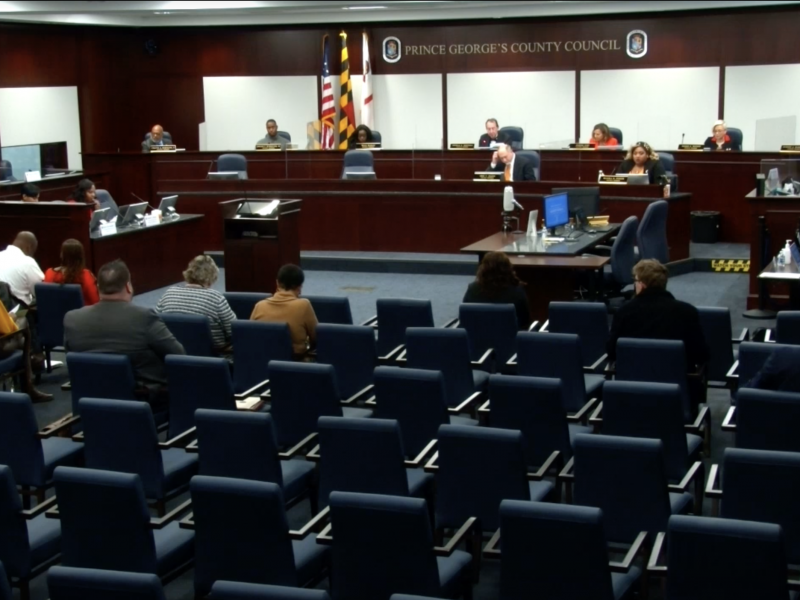The College Park Airport burns leaded fuel and will continue to do so for the foreseeable future, although some local community leaders are unaware.
Nestled in a densely populated area of Prince George’s County and less than a mile from Paint Branch Elementary School, the College Park Airport is one of many small airports across the country that sell and burn leaded fuel—a pollutant that is the largest remaining aggregate source of lead emissions in the air in the U.S.
“I just have a lot of reservations looking at the fact that our tax dollars are going to an airport that is potentially polluting our community and is adjacent to an elementary school,” College Park council member Stuart Adams said.
Roughly 13,000 aviation airports in the U.S. release 468 tons of lead into the atmosphere every year, according to the Environmental Protection Agency. Roughly 3 million children and millions more adults live within a kilometer of these airports. All forms of lead are toxic if inhaled or ingested, including leaded fuel, according to the FAA.
The College Park Airport has less activity than most. In 2020, the airport emitted 14.1 pounds of lead, a slight decrease from 15.78 pounds in 2017, according to the EPA. State and local air quality agencies are required to monitor airports with estimated lead emissions of more than one ton per year, a threshold the College Park Airport does not exceed, an EPA spokesperson told The Diamondback.
[Newest College Park City Council member wants to prioritize green space, walkability]
Infants and young children are especially sensitive to low levels of lead, which can cause behavioral and learning problems. A 2011 Duke University study found “children living within 500 meters of an airport at which planes use leaded avgas have higher blood lead levels than other children.”
The EPA also proposed an endangerment finding in 2022, which, if finalized, will determine if aircraft lead emissions cause or contribute to air pollution that could endanger public health. The endangerment findings are expected to be released in 2023.
The U.S. House of Representatives also voted to reauthorize the Federal Aviation Administration’s funding through the 2023 fiscal year last month. One provision requires airports to continue providing leaded fuel to receive federal funding, which nearly all airports rely on.
Current stipulations for the FAA reauthorization means the College Park Airport is one of many that could continue selling and burning leaded aviation fuel, despite possible EPA endangerment findings.
Lee Sommer, the College Park airport’s manager, said general aviation aircraft have contained lead since the “beginning of time” to help engines cool and not fail while aircraft are in flight.
In December 2022, former College Park Mayor Patrick Wojahn, with support of the College Park City Council, sent a letter to the EPA supporting the proposed endangerment findings.
“Children in elementary school and on playing fields are being exposed to lead in the air that they breathe as they go to school or play outdoors,” Wojahn wrote. “What should be healthy activities are exposing these children to risks that could impact them for life.”
Adams said he believes the College Park community is largely unaware of lead pollution from these planes.
“If we have an elementary school, adjacent to the runways, we should probably be proactively planning on what our action should be to address that,” Adams said.
Despite concerns, Prince George’s County council member Eric Olson, who represents College Park, and current College Park Mayor Fazlul Kabir, said they were not aware that there was a source of lead pollution in College Park when they spoke with The Diamondback this summer.
[PGCPS’ new metal detectors, clear backpack policies take effect as new school year begins]
Eric Blinderman, a private pilot and senior communications director for the Aircraft Owners and Pilots Association, said everyone in the aviation industry wants lead out of fuel, but that it needs to be done without removing planes from service.
Many aircrafts that burn leaded fuel perform flights for businesses, law enforcement, agriculture support, disaster relief and other public benefits, Blinderman said.
”Grounding [small engine planes] would be catastrophic to their business and the economy,” Blinderman said. “We want to get out of aviation fuel, but it’s got to be done safely and smartly.”
Leaded automobile gas was fully phased out in 1996 with the passage of the Clean Air Act, but roughly 170,000 piston-engine aircrafts, which are made to fly short distances, operate using leaded fuel because there are no operationally safe leaded fuel alternatives available for these aircrafts, according to the National Academy of Sciences, Engineering and Medicine.
In 2022, the FAA launched the Eliminate Aviation Gasoline Lead Emissions initiative, which is a partnership between the FAA, fuel producers and distributors, airport operators and environmental experts. The initiative’s goal is to identify at least one unleaded fuel acceptable for safe piston-engine aircraft use by 2030.
Sommer said it’s good that the FAA is working to eliminate the use of leaded fuel, though it will be costly to install the technology needed to support a new fuel.
“I will be one of the first ones to move over to [a new fuel if] it’s available,” Sommer said.



